
Legal Writing in Plain English, Second Edition:A Text with Exercises
¥ 90 九品
仅1件
作者Bryan A. Garner
出版社University Of Chicago Press
出版时间2013-08
装帧其他
上书时间2024-06-24
- 在售商品 暂无
- 平均发货时间 9小时
- 好评率 暂无
- 最新上架
商品详情
- 品相描述:九品
图书标准信息
- 作者 Bryan A. Garner
- 出版社 University Of Chicago Press
- 出版时间 2013-08
- ISBN 9780226283937
- 装帧 其他
- 开本 其他
- 页数 256页
- 【内容简介】
-
Admirably clear, concise, down-to-earth, and powerful—all too often, legal writing embodies none of these qualities. Its reputation for obscurity and needless legalese is widespread. Since 2001 Bryan A. Garner’s Legal Writing in Plain English has helped address this problem by providing lawyers, judges, paralegals, law students, and legal scholars with sound advice and practical tools for improving their written work. Now the leading guide to clear writing in the field, this indispensable volume encourages legal writers to challenge conventions and offers valuable insights into the writing process that will appeal to other professionals: how to organize ideas, create and refine prose, and improve editing skills.
Accessible and witty, Legal Writing in Plain English draws on real-life writing samples that Garner has gathered through decades of teaching experience. Trenchant advice covers all types of legal materials, from analytical and persuasive writing to legal drafting, and the book’s principles are reinforced by sets of basic, intermediate, and advanced exercises in each section.
In this new edition, Garner preserves the successful structure of the original while adjusting the content to make it even more classroom-friendly. He includes case examples from the past decade and addresses the widespread use of legal documents in electronic formats. His book remains the standard guide for producing the jargon-free language that clients demand and courts reward. - 【作者简介】
- Bryan A. Garner is president of LawProse, Inc., and the Distinguished Research Professor of Law at Southern Methodist University. The editor-in-chief of Black’s Law Dictionary, Garner is the author of several best-selling books, including Garner’s Modern American Usage and, with Justice Antonin Scalia, Reading Law: The Interpretation of Legal Texts and Making Your Case: The Art of Persuading Judges.
- 【目录】
-
Preface
Introduction
Part One: Principles for All Legal Writing
1. Framing Your Thoughts
§ 1. Have something to say—and think it through.
§ 2. For maximal efficiency, plan your writing projects. Try nonlinear outlining.
§ 3. Order your material in a logical sequence. Present facts chronologically. Keep related material together.
§ 4. Divide the document into sections, and sections into subparts as needed. Use informative headings.
2. Phrasing Your Sentences
§ 5. Omit needless words.
§ 6. Keep your average sentence length to about 20 words.
§ 7. Keep the subject, the verb, and the object together—toward the beginning of the sentence.
§ 8. Use parallel phrasing for parallel ideas.
§ 9. Prefer the active voice over the passive.
§ 10. Avoid multiple negatives.
§ 11. End sentences emphatically.
3. Choosing Your Words
§ 12. Learn to detest simplifiable jargon.
§ 13. Use strong, precise verbs. Minimize is, are, was, and were.
§ 14. Simplify wordy phrases. Watch out for of.
§ 15. Turn -ion words into verbs when you can.
§ 16. Avoid doublets and triplets.
§ 17. Refer to people and companies by name. Never use corresponding terms ending in -ee and -or.
§ 18. Don’t habitually use parenthetical shorthand names. Use them only when you really need them.
§ 19. Shun newfangled acronyms.
§ 20. Make everything you write speakable.
Part Two: Principles Mainly for Analytical and Persuasive Writing
§ 21. Plan all three parts: the beginning, the middle, and the end.
§ 22. Use the “deep issue” to spill the beans on the first page.
§ 23. Summarize. Don’t overparticularize.
§ 24. Introduce each paragraph with a topic sentence.
§ 25. Bridge between paragraphs.
§ 26. Vary the length of your paragraphs, but generally keep them short.
§ 27. Provide signposts along the way.
§ 28. Unclutter the text by moving citations into footnotes.
§ 29. Weave quotations deftly into your narrative.
§ 30. Be forthright in dealing with counterarguments.
Part Three: Principles Mainly for Legal Drafting
§ 31. Draft for an ordinary reader, not for a mythical judge who might someday review the document.
§ 32. Organize provisions in order of descending importance.
§ 33. Minimize definitions and cross references. If you have more than just a few definitions, put them in a schedule at the end—not at the beginning.
§ 34. Break down enumerations into parallel provisions. Put every list of subparts at the end of the sentence—never at the beginning or in the middle.
§ 35. Delete every shall.
§ 36. Don’t use provisos.
§ 37. Replace and/or wherever it appears.
§ 38. Prefer the singular over the plural.
§ 39. Prefer numerals, not words, to denote amounts. Avoid word-numeral doublets.
§ 40. If you don’t understand a form provision—or don’t understand why it should be included in your document—try diligently to gain that understanding. If you still can’t understand it, cut it.
Part Four: Principles of Document Design
§ 41. Use a readable typeface.
§ 42. Create ample white space—and use it meaningfully.
§ 43. Highlight ideas with attention-getters such as bullets.
§ 44. Don’t use all capitals, and avoid initial capitals.
§ 45. For a long document, make a table of contents.
Part Five: Methods for Continued Improvement
§ 46. Embrace constructive criticism.
§ 47. Edit yourself systematically.
§ 48. Learn how to find reliable answers to questions of grammar and usage.
§ 49. Habitually gauge your own readerly likes and dislikes, as well as those of other readers.
§ 50. Remember that good writing makes the reader’s job easy; bad writing makes it hard.
Appendix A How to Punctuate
Appendix B Four Model Documents
1. Research Memorandum
2. Motion
3. Appellate Brief
4. Contract
Key to Basic Exercises
Index
相关推荐
-

Writing and Drafting in Legal Practice
九五品石家庄
¥ 160.00
-

legal writing
九品北京
¥ 198.00
-
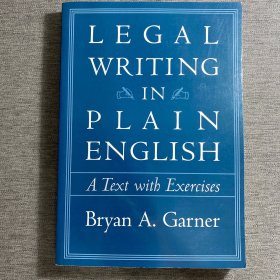
Legal Writing in Plain English:A Text With Exercises
九五品北京
¥ 180.00
-

Legal Writing in Plain English:A Text With Exercises
九五品上海
¥ 180.00
-
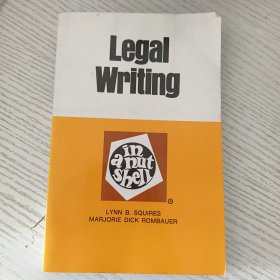
Legal Writing 法律写作
九品衡水
¥ 169.00
-
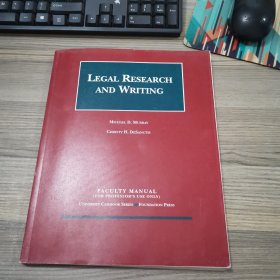
Legal Research and Writing
九品周口
¥ 1200.00
-
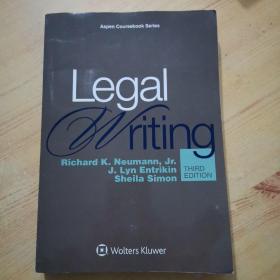
Legal Writing 法律写作
九品北京
¥ 266.00
-

THE ELEMENTS OF LEGAL WRITING
九品北京
¥ 200.00
-

The Elements of Legal Writing
九品周口
¥ 200.00
-
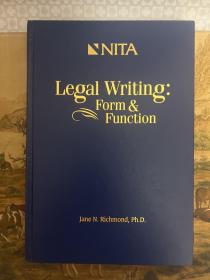
Legal Writing: Form and Function
八五品北京
¥ 148.00
— 没有更多了 —















以下为对购买帮助不大的评价